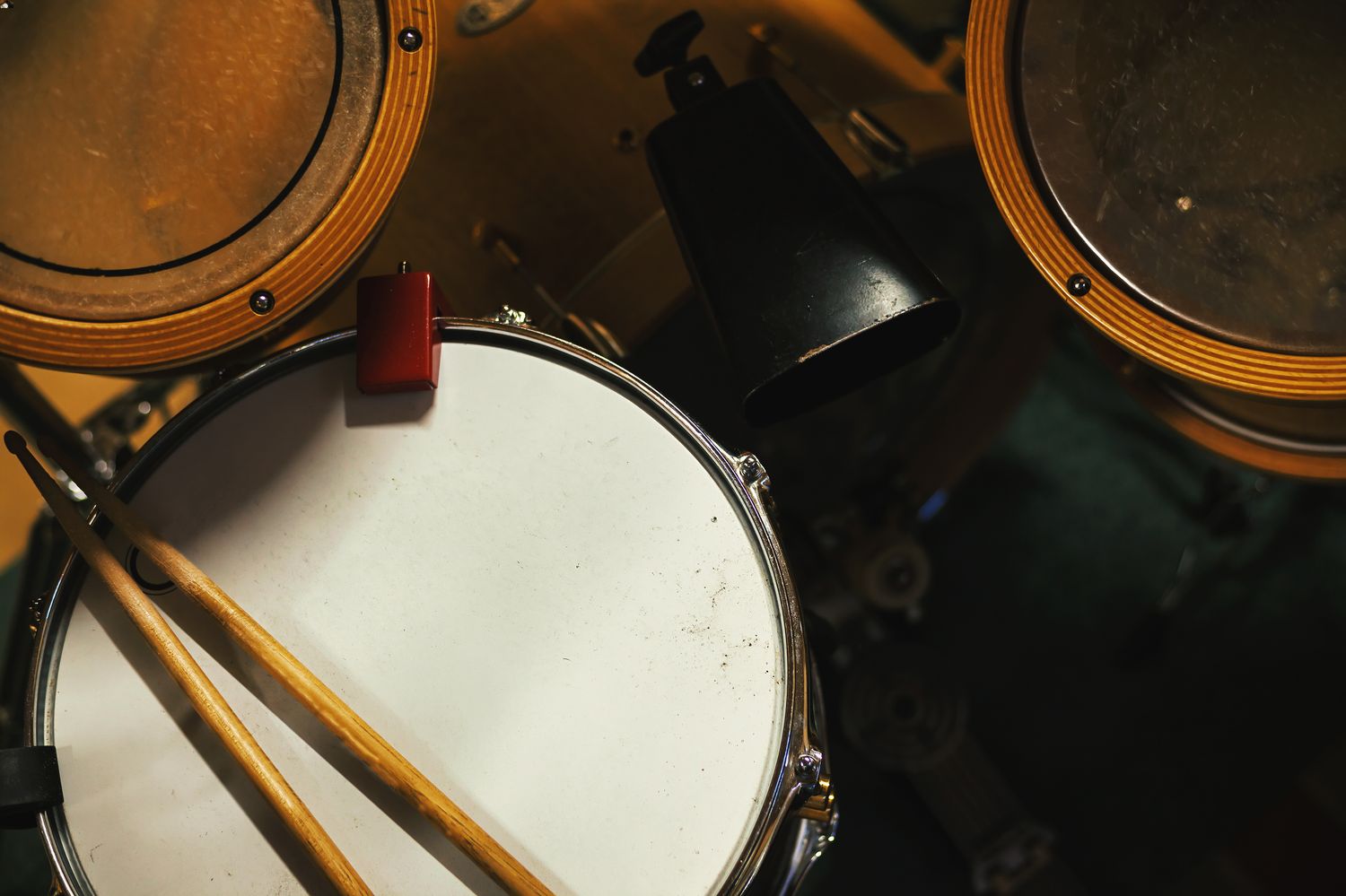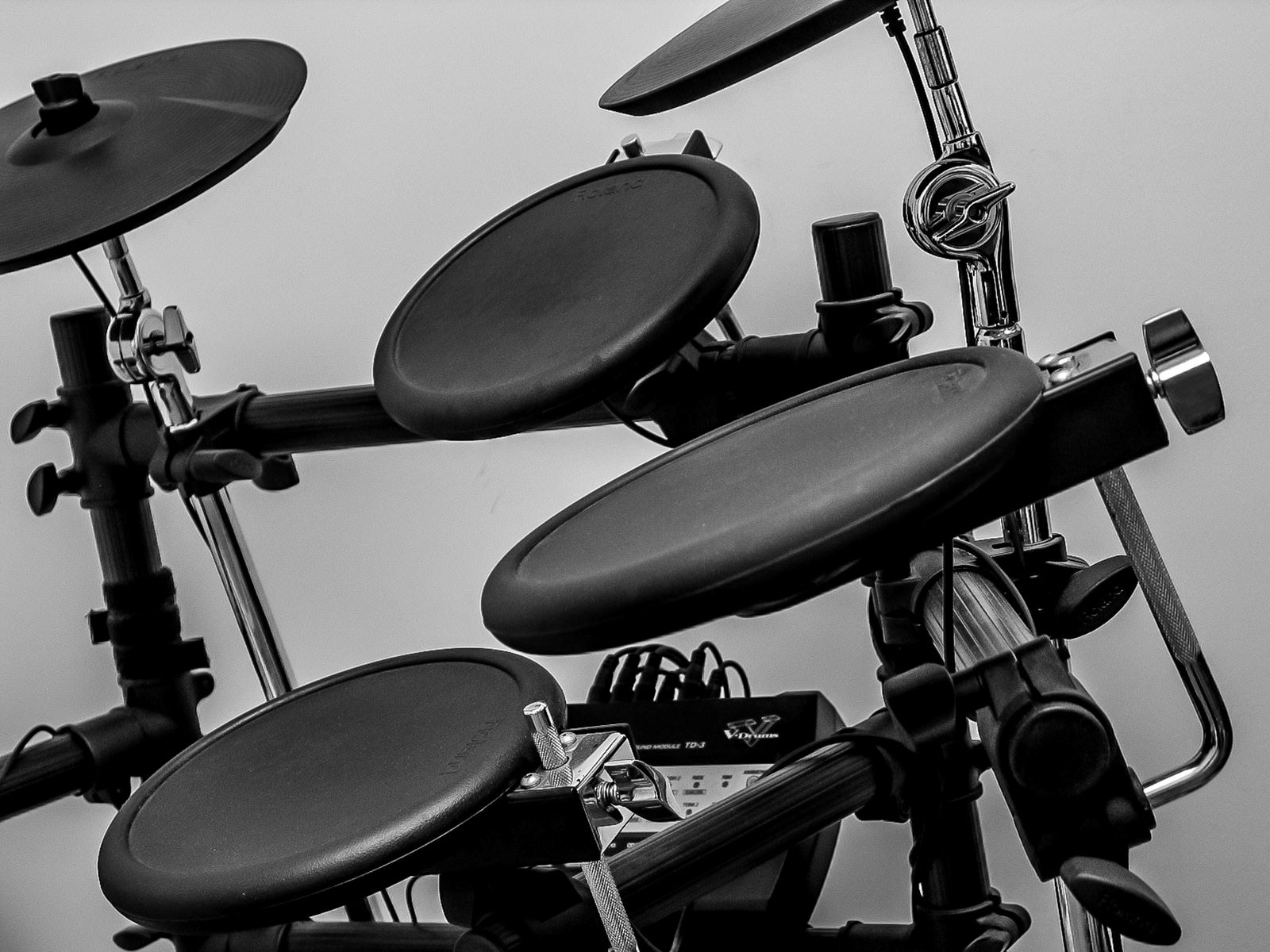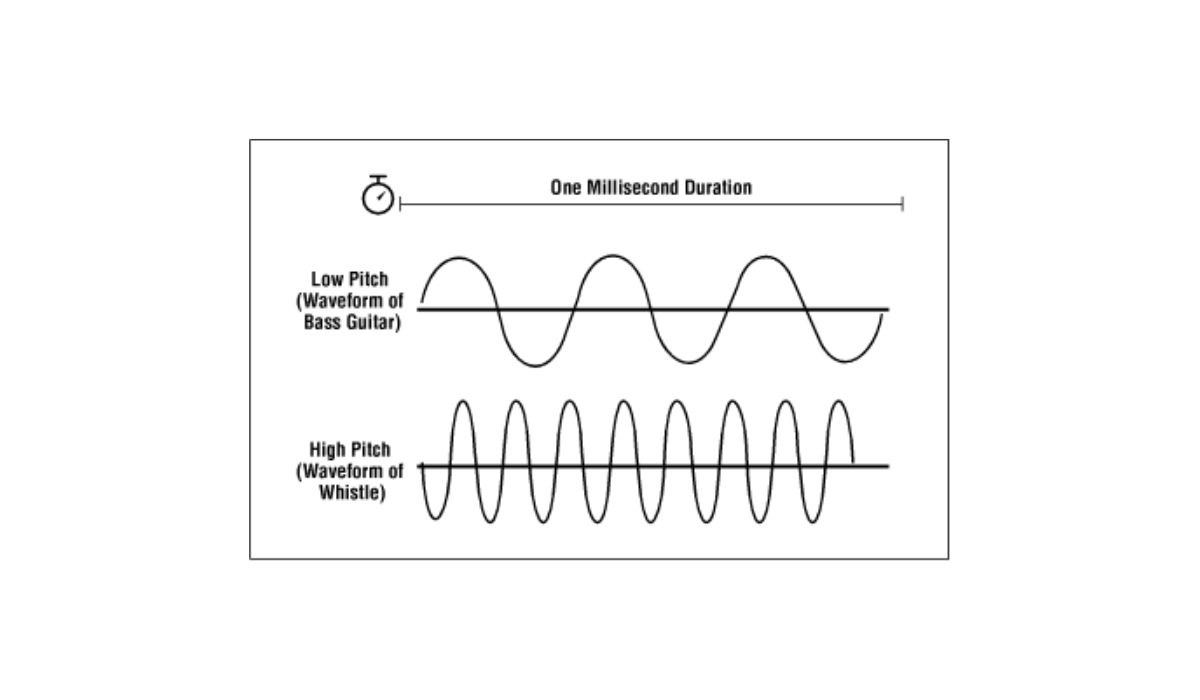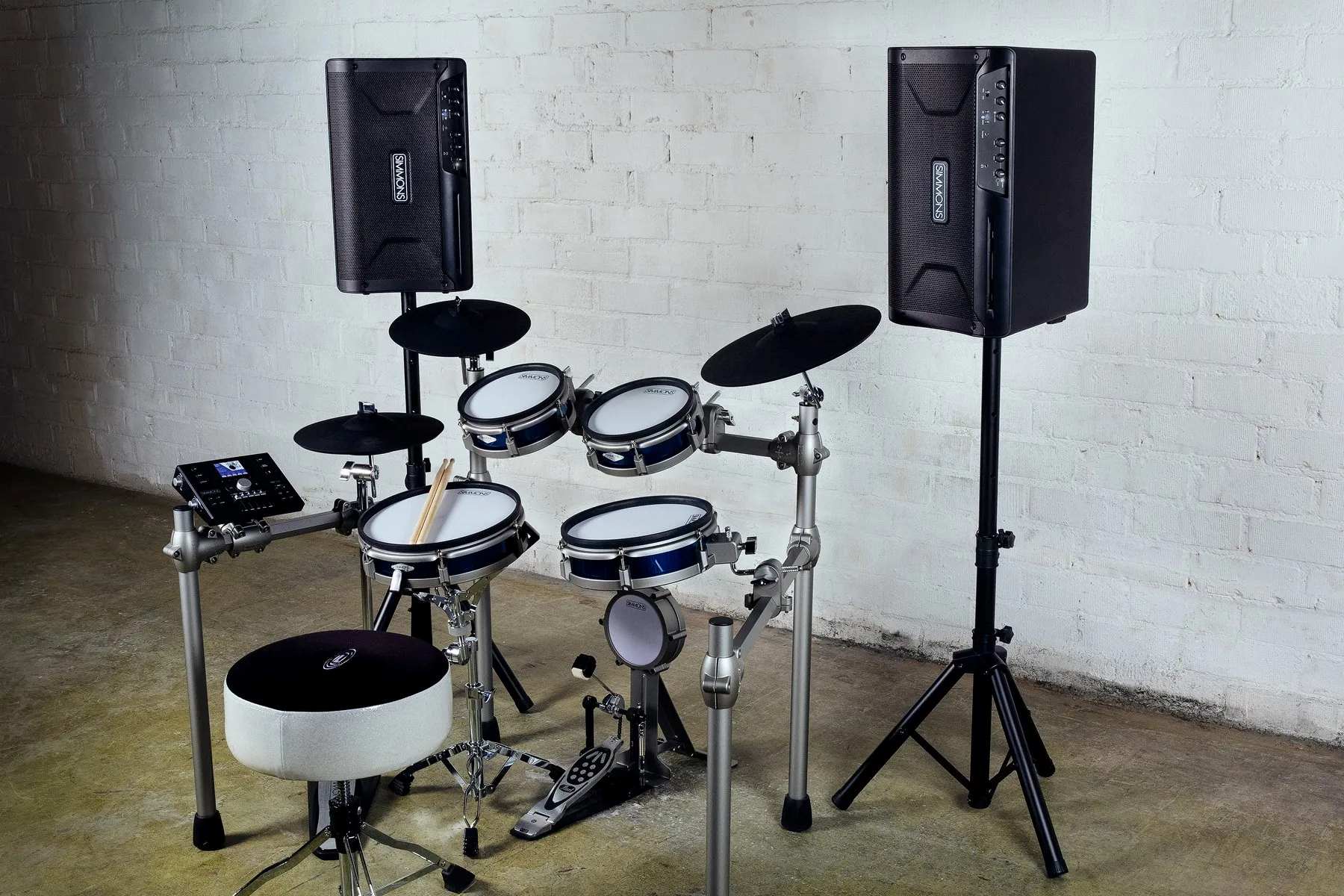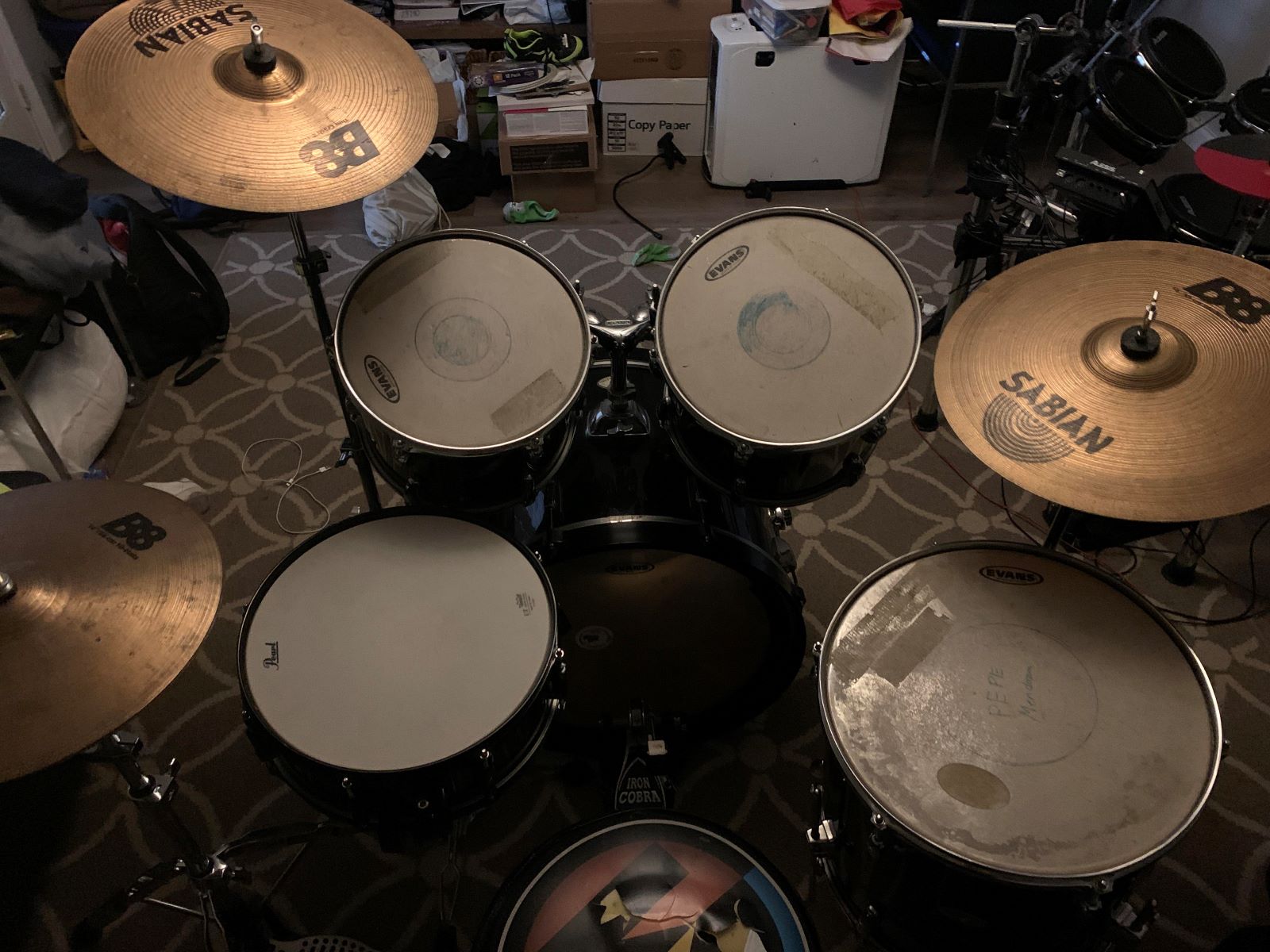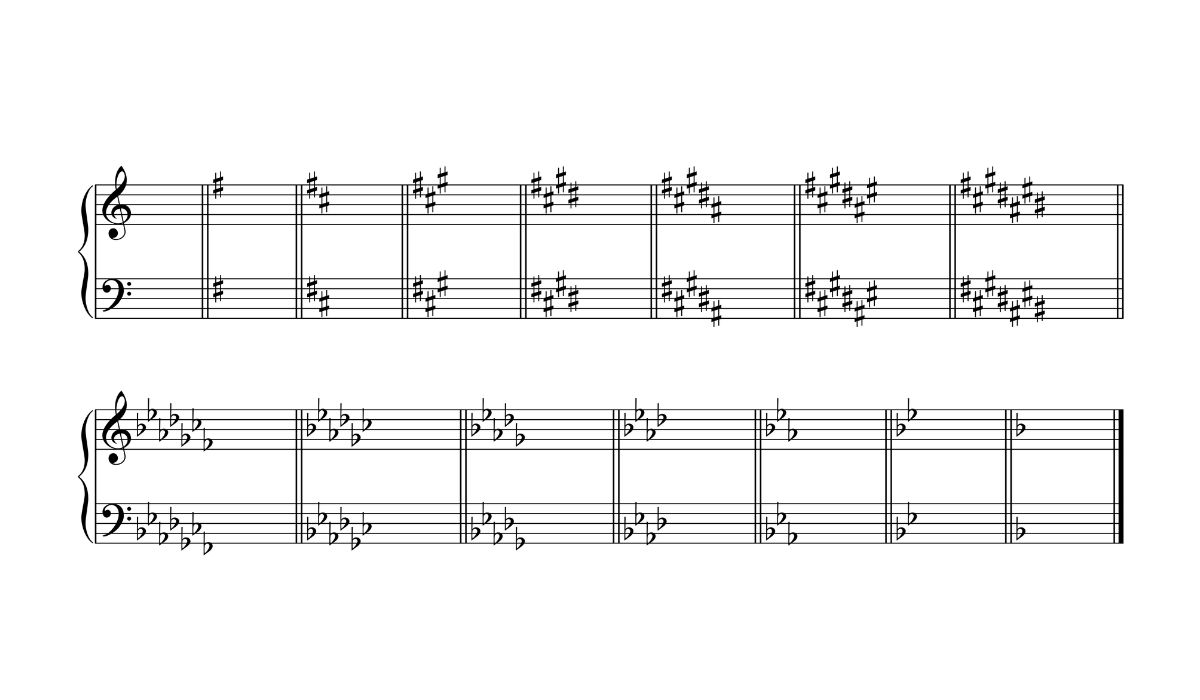Home>Instruments>Drums>How Do Drums Make Different Pitches


Drums
How Do Drums Make Different Pitches
Published: February 7, 2024
Learn how drums produce various pitches and the factors that influence their sound. Explore the mechanics of drum pitch and how to control it effectively. Discover the secrets of drum tuning and pitch manipulation.
(Many of the links in this article redirect to a specific reviewed product. Your purchase of these products through affiliate links helps to generate commission for AudioLover.com, at no extra cost. Learn more)
Table of Contents
Introduction
Drums are one of the most captivating and essential components of music across various cultures and genres. Their rhythmic beats and diverse pitches add depth and energy to musical compositions, making them integral to the sonic landscape. Understanding how drums produce different pitches is a fascinating journey into the mechanics of sound and musical expression. In this article, we will delve into the fundamental structure of drums, explore the mechanisms behind the production of varying pitches, and examine the factors that influence these tonal variations.
The ability of drums to generate a wide range of pitches is a testament to the ingenuity of their design and the skill of the musicians who play them. From the thunderous resonance of a bass drum to the crisp snap of a snare, each drum type contributes distinct tonal qualities to the overall sound. By comprehending the underlying principles of pitch production, both musicians and enthusiasts can gain a deeper appreciation for the artistry and physics involved in creating captivating rhythms.
Join us as we embark on an illuminating exploration of how drums produce different pitches, unraveling the mysteries behind these versatile instruments and uncovering the secrets of their sonic diversity. Whether you're a seasoned percussionist, an aspiring musician, or simply a curious music lover, this journey promises to enrich your understanding of drums and the captivating array of pitches they produce.
Let's begin our rhythmic odyssey by unraveling the basic structure of drums and laying the foundation for our exploration of their pitch-producing mechanisms.
The Basic Structure of Drums
Before delving into the intricacies of pitch production, it’s essential to grasp the fundamental structure of drums. Drums, in their most basic form, consist of a cylindrical shell, a drumhead or membrane stretched over the shell, and a mechanism for tensioning the drumhead. This simple yet ingenious design forms the basis for an astonishing array of drum types, each with its unique sonic characteristics.
The cylindrical shell, typically made of wood, metal, or synthetic materials, serves as the main body of the drum. It provides the foundation for the resonance and projection of sound. The drumhead, usually made of plastic, animal skin, or synthetic materials, is affixed to the shell’s open ends. When struck, the drumhead vibrates, producing sound waves that propagate through the air.
Crucial to the drum’s functionality is the tensioning system, which allows the player to adjust the drumhead’s tautness. This can be achieved through a variety of mechanisms, such as tuning pegs, lugs, or modern hardware systems, depending on the drum type. By altering the tension of the drumhead, musicians can fine-tune the pitch and tone of the drum, expanding its sonic versatility.
Drums come in a diverse range of shapes and sizes, each contributing unique tonal qualities to the musical ensemble. From the thunderous resonance of the bass drum to the sharp crack of the snare and the melodic tones of the tom-toms, the structural variations among drum types give rise to an extensive palette of sounds.
With a solid understanding of the basic components and configurations of drums, we are now equipped to explore the mechanisms that enable these versatile instruments to produce an array of pitches. Let’s venture deeper into the heart of drum mechanics and unravel the captivating world of pitch production.
How Different Pitches Are Produced
The production of different pitches on drums is a result of the interplay between the drum’s fundamental structure and the techniques employed by the musician. When a drum is struck, the drumhead vibrates, creating sound waves that travel through the air. The pitch of the sound is determined by the frequency of these vibrations, which, in turn, is influenced by various factors.
One of the primary determinants of pitch is the tension of the drumhead. When the drumhead is tightly stretched, it produces a higher pitch, whereas a looser drumhead yields a lower pitch. By adjusting the tension of the drumhead, musicians can finely tune the pitch of the drum to suit the desired musical context. This manipulation of tension is especially prominent in instruments like the snare drum and the tom-toms, where nuanced pitch variations play a crucial role in creating rhythmic dynamics.
Furthermore, the size and thickness of the drumhead also contribute to pitch variation. Thicker drumheads tend to produce lower pitches, while thinner ones generate higher pitches. Additionally, the diameter and depth of the drum shell impact the drum’s overall tonal characteristics. Larger drums generally produce lower pitches, while smaller drums yield higher pitches. The combination of these factors results in a diverse range of tonal possibilities across different drum types.
Another vital aspect of pitch production is the striking technique employed by the musician. The location where the drumhead is struck and the force applied can significantly influence the resulting pitch and timbre. For instance, striking the drumhead near its center typically produces a higher pitch, while striking closer to the rim yields a lower pitch. Moreover, the intensity of the strike affects the volume and resonance of the sound, adding further dimensions to the tonal expression of the drum.
Understanding how different pitches are produced on drums not only enriches our appreciation of the instruments but also offers valuable insights for musicians seeking to harness the full sonic potential of their drum kits. With this knowledge in hand, we are poised to explore the myriad factors that influence drum pitches, shedding light on the intricate nuances that shape the captivating world of drumming.
Factors Affecting Drum Pitches
Several key factors influence the pitches produced by drums, encompassing both the inherent characteristics of the drums themselves and the techniques employed by the musicians. Understanding these factors is essential for musicians and enthusiasts alike, as it provides valuable insights into the nuanced art of drumming and the diverse sonic possibilities that drums offer.
First and foremost, the tension of the drumhead plays a pivotal role in determining the pitch of the drum. By adjusting the tension, musicians can modulate the pitch to achieve the desired tonal quality. This dynamic control over pitch is particularly evident in instruments like the snare drum, where subtle changes in tension can yield a spectrum of tones, from sharp and piercing to deep and resonant.
Additionally, the size and thickness of the drumhead significantly impact the pitch. Thicker drumheads tend to produce lower pitches, while thinner ones result in higher pitches. This characteristic is particularly pronounced in instruments such as the bass drum, where the size and thickness of the drumhead contribute to the instrument’s deep, booming sound.
The dimensions of the drum shell also influence the pitches that the drum can produce. Larger drums generally produce lower pitches, while smaller drums yield higher pitches. The depth of the shell further contributes to the drum’s tonal characteristics, adding depth and resonance to the produced pitches.
Furthermore, the striking technique employed by the musician is a critical factor in pitch production. The location on the drumhead where the strike occurs, as well as the force and angle of the strike, profoundly impact the resulting pitch and timbre. By skillfully manipulating these variables, drummers can elicit a rich array of tones from their instruments, enhancing the expressiveness and versatility of their performances.
Environmental factors, such as temperature and humidity, can also influence drum pitches. Changes in these conditions can affect the tension and resonance of the drumheads, consequently altering the pitches produced by the drums. As such, musicians often need to adapt and fine-tune their instruments to maintain consistent pitch and tone, especially in dynamic performance settings.
By comprehending the multifaceted interplay of these factors, both musicians and enthusiasts can gain a deeper appreciation for the complexity and artistry of drumming. This understanding not only enriches the musical experience but also empowers drummers to harness the full sonic potential of their instruments, unlocking a world of rhythmic expression and tonal diversity.
Conclusion
Our exploration of how drums produce different pitches has unveiled the intricate mechanics and artistry behind these versatile instruments. From the fundamental structure of drums to the myriad factors influencing their pitches, we have gained valuable insights into the multifaceted world of drumming and sonic expression.
Drums, with their diverse shapes, sizes, and materials, offer an expansive canvas for musical creativity. The tension of the drumhead, the size and thickness of the drumhead, and the dimensions of the drum shell all contribute to the rich tapestry of pitches that drums can produce. These factors, when deftly manipulated by skilled musicians, yield an astonishing array of tones, from thunderous lows to crisp highs, adding depth and dynamism to musical compositions.
Furthermore, the striking techniques employed by drummers play a pivotal role in shaping the pitches and timbres that emanate from their instruments. The nuanced art of striking, coupled with an understanding of the drum’s inherent characteristics, empowers musicians to craft expressive and evocative rhythms that captivate audiences and elevate musical performances.
As we conclude our rhythmic odyssey, it is evident that the production of different pitches on drums is a harmonious blend of science and art. The physics of vibrations and frequencies intertwine with the creativity and skill of musicians, resulting in a symphony of sonic possibilities. Whether in the pulsating rhythms of rock and pop or the intricate patterns of jazz and world music, drums stand as pillars of rhythmic expression, enriching the musical landscape with their boundless tonal diversity.
Armed with a deeper understanding of how drums produce different pitches, both musicians and enthusiasts are poised to embark on a heightened musical journey, where the nuances of pitch and tone become vivid palettes for artistic expression. As we listen to the resounding beats of drums, let us marvel at the ingenuity and artistry that underpin their pitch-producing mechanisms, and embrace the captivating world of rhythmic exploration that drums offer.

